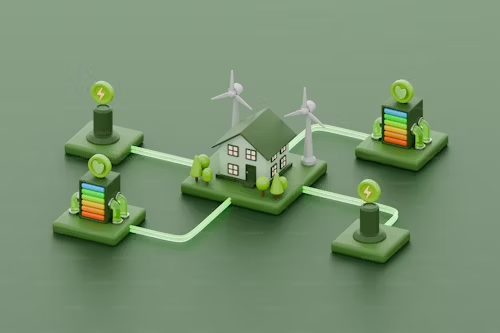Energy Sector Trends and Green Technology
Energy sector trends and green technology are reshaping the future of energy production and consumption. The rise of renewable energy, advancements in energy storage, and increasing digitalization are driving this transformation. Governments, businesses, and consumers are aligning with sustainability goals to reduce carbon emissions and embrace green technologies.
Renewable Energy: Shifting to Clean Energy Sources
The energy sector is rapidly adopting renewable energy sources such as solar, wind, and hydropower. These clean energy sources are gaining prominence as countries work to reduce dependence on fossil fuels. The shift toward renewables is critical for meeting global sustainability targets.
Energy Storage Solutions: A Critical Component of Green Technology
Energy storage systems, including lithium-ion batteries and hydrogen storage, play a vital role in stabilizing renewable energy supply. These technologies ensure that excess energy generated during peak production can be stored and used when needed, enhancing grid reliability.
Digitalization of the Energy Sector: Smart Grids and IoT
The adoption of smart grids and Internet of Things (IoT) technologies is transforming energy systems. Real-time monitoring and predictive analytics optimize energy distribution and improve efficiency. These innovations make energy systems more resilient and sustainable.
Policy and Regulation: Driving Green Energy Adoption
Governments are implementing policies to promote green energy through tax incentives, subsidies, and carbon pricing mechanisms. International agreements like the Paris Agreement provide frameworks for achieving climate goals and accelerating the energy transition.
The Role of Electric Vehicles (EVs) in the Energy Transition
Electric vehicles (EVs) are becoming integral to the transition to clean energy. As more consumers switch to EVs, the demand for renewable electricity grows. Developing charging infrastructure and advancing battery technology are essential for the success of this transition.
Green Hydrogen: A Game-Changer in the Energy Sector
Green hydrogen offers a sustainable solution for industries that are challenging to decarbonize, such as heavy manufacturing. Produced using renewable energy, green hydrogen presents an opportunity to replace fossil fuels in various sectors.
Carbon Capture and Storage (CCS): Addressing Emission Challenges
Carbon capture and storage (CCS) technology captures emissions from industrial processes and stores them underground. CCS is essential for reducing emissions from industries where decarbonization is difficult, complementing renewable energy efforts.
Investment Trends in the Energy Sector
Investments in green technology are increasing as both public and private sectors recognize the economic potential of sustainable energy. Renewable energy projects, smart grid development, and energy efficiency technologies attract significant investments.
Challenges Facing the Green Energy Transition
The transition to green energy faces challenges, including high costs, infrastructure limitations, and regulatory hurdles. Overcoming these barriers requires continuous innovation, strong policies, and international collaboration.
The Future of the Energy Sector: A Green Transformation
The future of the energy sector lies in digitalization, decarbonization, and the widespread adoption of green technologies. Integrating renewable energy, smart systems, and electric transportation will drive the sector toward sustainability.
Conclusion
Energy sector trends and green technology are leading the transition to a sustainable future. Innovations in renewables, storage solutions, and smart grids are reshaping the energy landscape. As investments and policies align with global climate goals, green technology will continue to drive the evolution of the energy sector.

